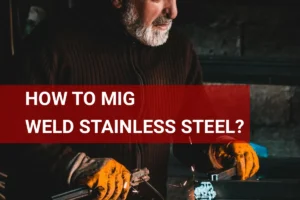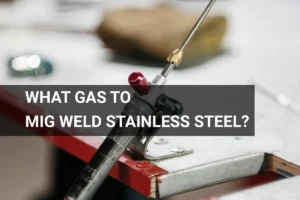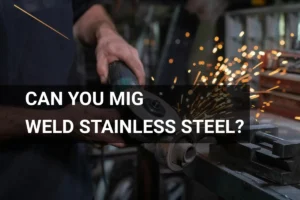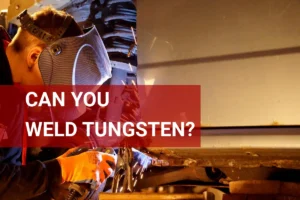What is GTAW Welding? Discover the Process, Types, and Applications
Published on: April 4, 2025 | Last modified: March 4, 2025
By: Joe Carter
GTAW stands for Gas Tungsten Arc Welding. It’s a welding process that uses a non-consumable tungsten electrode to create the weld.
One question I get asked a lot is what is gtaw welding? It’s crucial to understand this because following the correct process can make or break your project. In my own work, I’ve seen how good GTAW leads to strong, clean welds every time.
In this guide, you’ll learn about how GTAW welding works, different types of GTAW, steps involved in GTAW welding, factors affecting results, common issues, aftercare tips, applications of GTAW in various industries, and alternatives for similar results. You’ll get insights on what type of welding power supply is required for GTAW, what does GTAW mean in welding, and what types of industries require GTAW-quality pipe welds.
Contents
- What is GTAW Welding?
- How Does GTAW Welding Work?
- Types Of GTAW Welding
- Common GTAW Welding Techniques and Their Benefits
- Steps for GTAW Welding
- Factors Affecting GTAW Welding
- What Could Go Wrong: Common Issues
- Aftercare, Inspection, and Advanced Tips for GTAW Welding
- Applications Of GTAW Welding
- Alternatives for Achieving Results Similar to GTAW Welding
- Frequently Asked Questions (FAQs)
- Conclusion
- References
What is GTAW Welding?
Gas Tungsten Arc Welding (GTAW) uses a non-consumable tungsten electrode to join metals. It’s precise and produces high-quality welds, making it ideal for industries like aerospace and automotive where strength is critical.
How Does GTAW Welding Work?
What Is TIG (Gas Tungsten Arc Welding/GTAW)?, or Gas Tungsten Arc Welding, uses a non-consumable tungsten electrode to create the weld. It operates at currents from 10 to 300 A, with most sessions running around 100-150 A for typical steel materials. GTAW employs a shielding gas, usually argon or helium, to protect the weld pool from contamination. This method excels with thin materials, often about 1/8 inch (3 Mm), and provides a high-quality finish.
This process is versatile and accommodates a range of welding currents. You can use either alternating current (AC) or direct current (DC), making it suitable for various metals like aluminum and stainless steel. Precision and control are essential elements of GTAW welding, which experts value.
I once made a mistake while setting up my GTAW equipment by choosing the wrong polarity; it nearly ruined my project. After I corrected it, I realized GTAW is ideal for industries requiring high-quality pipe welds, like aerospace and automotive. Ultimately, understanding how GTAW works will help you achieve flawless welds and enhance your skills.
Types Of GTAW Welding
What are the types of this welding process?
-
Direct Current Electrode Negative (DCEN)
This type uses the electrode as the negative terminal, focusing heat on the workpiece. To perform DCEN, connect the tungsten electrode to the negative terminal and the workpiece to the positive terminal, allowing for better penetration.
-
Direct Current Electrode Positive (DCEP)
In this setup, the electrode is the positive terminal, creating a softer arc. This is useful for welding thin materials. To use DCEP, reverse the connections, placing the tungsten electrode on the positive terminal and the workpiece on the negative, promoting better fluidity in the filler material. Underwater welding presents unique challenges and understanding its potential dangers is crucial for safety.
-
Alternating Current (AC)
AC welding alternates the current flow, making it ideal for aluminum and magnesium. It cleans the surface while welding. To set up AC, you’ll need a transformer or inverter, which allows switching between positive and negative, providing a stable arc.
-
Pulse TIG Welding
This method alternates high and low currents, offering more control. It’s excellent for thin materials and reduces heat input. To implement pulse TIG, use a machine capable of pulsing, allowing you to adjust the frequency and duration for optimal results.
-
Specialty Welding Techniques
These methods include keyhole welding and fast-freezing processes, tailored for specific materials and situations. To perform specialty techniques, you typically need advanced equipment designed for particular projects, like pipe welding in high-stress industries.
That covers the different varieties of GTAW welding. Let’s now take a look at popular GTAW welding techniques and their advantages.
Common GTAW Welding Techniques and Their Benefits
Let’s dive into some specific techniques used in GTAW welding and their advantages.
| Technique | Description | Benefits |
|---|---|---|
| Welding with Filler Material | Adding compatible filler to the molten weld pool helps join thicker or dissimilar materials. | Increases joint strength and prevents burn-through. |
| No Filler Welding | Welding without filler creates a weld from the base materials alone. | Ideal for thin materials, resulting in a smoother, cleaner finish. |
| Weaving Technique | Moving the torch in a weaving pattern creates wider beads for coverage. | Balances heat distribution, useful for thicker materials or wider joints. |
| Stringer Beads | Straight, narrow welds deposited in a single pass. | Great for thin sheets, offering control and speed. |
| Backhand vs. Forehand Technique | Backhand moves away from the weld pool, while forehand leads into it. | Backhand is typically stronger; forehand works well for thinner materials. |
We have now covered common GTAW welding techniques and their advantages. Next, we will examine the steps involved in GTAW welding.
Steps for GTAW Welding
Here are the steps for gas tungsten arc welding (GTAW) to enhance your understanding.
-
Set the Power Supply
First, set the power supply. Choose AC (Alternating Current) or DC (Direct Current) based on your material. For aluminum, use AC at 90-135 amps. For stainless steel, stick with DC at 100-140 amps for a clean weld.
If you’re exploring advanced methods, you might wonder how much a laser welder costs.
I usually prefer DC for steel and AC for aluminum. Having the right power makes a significant difference in weld quality. If you’re unsure, start with a test piece.
-
Adjust the Argon Gas Flow Rate
Next, adjust the argon gas flow rate, typically between 10-20 cubic feet per hour (CFH). Higher flow rates can disturb the arc, while lower rates may cause oxidation. Keep it consistent for smoother welding.
Mastery in welding also requires understanding the intricacies of different positions, and welding uphill presents unique challenges. To effectively tackle these challenges, explore techniques for welding uphill.
I learned that good gas flow keeps out contaminants; a well-sealed environment yields a stronger joint. Test your settings; small tweaks can lead to great results.
-
Choose the Correct Electrode
Select the right tungsten electrode. A commonly used type is 2% Lanthanated tungsten for various materials. For aluminum, a pure tungsten tip works better because it offers a wider arc. Diameters typically range from 1/16 inch (1.6 Mm) to 1/8 inch (3.2 Mm).
Welders often face challenges when working in awkward positions. If you are keen to master the nuances of welding in constrained spaces, consider exploring how to weld upside down.
I once used the wrong electrode for aluminum, causing the welder to sputter and produce poor beads. Test different sizes to discover which offers better control and stability under heat.
-
Position the Welding Torch
Position the torch at a 15-degree angle, tilted towards the weld pool. Maintain a distance of about 1/8 inch (3 Mm) from the workpiece. This helps focus the arc and minimizes contamination.
I tend to start farther away; otherwise, the weld gets messy. Hold it steady, and you’ll see improved design on your passes. It requires practice and a steady hand.
-
Create the Weld Pool
Start the arc by touching the tungsten to the base material, then lift slightly to create the weld pool. Allow the metal to melt smoothly before adding filler material if needed. Control the heat to avoid burn-through. It is crucial for welders to be aware of the factors leading to electric shocks in the welding process, as they may pose serious hazards; understanding what causes these incidents is essential to ensure safety and prevent accidents in the workplace.
Remember the golden rule: stay attentive! A well-maintained pool gives you a uniform bead. Timing is crucial; if you move too fast, you’ll lack enough metal; if too slow, you risk weakening the weld.
-
Add Filler Material (if Needed)
If you’re welding thicker metals, feed in filler rod as the pool forms. Use filler material that matches your base metal composition for the best results. Keep it steady; add it along the leading edge of the puddle.
The right filler makes a big difference. I once used a mismatched rod, leading to a weak weld. Always match it closely to prevent issues later.
-
Control the Travel Speed
Lastly, maintain a consistent travel speed of about 5-12 inches per minute (12-30 Cm/min), depending on your workpiece. Going too fast creates weak welds, while too slow can burn through the material.
I’ve found adjusting speed based on the buildup from previous passes helps. Watch closely, and don’t hesitate to do some test welds — you’ll master it eventually!
So far we covered the steps involved in GTAW welding. Next, let’s look at the factors that impact GTAW welding.
Factors Affecting GTAW Welding
What factors influence gas tungsten arc welding quality and outcomes?
-
Base Material Composition
The composition of your base material drives the success of GTAW. For instance, stainless steel and aluminum require different approaches and materials due to their unique melting points and conductivity. The right composition can improve weld strength by up to 30%.
-
Electrode Type and Size
Selecting the correct electrode significantly impacts weld quality. I often use a 2.4 mm (0.094 In) tungsten electrode for most applications. A good match between the electrode and base material boosts heat efficiency and reduces contamination risk.
-
Shielding Gas Selection
The right shielding gas enhances weld clarity and penetration. I once used 100% CO2 instead of Argon, resulting in a flawed weld. Typically, a mix of Argon with 5% to 20% Helium improves weld pool stability and often leads to cleaner joints. Knowing the suitable amperage for different welding rod sizes can significantly impact weld quality, as detailed in this 3/32 welding rod guide.
-
Welding Position
Your welding position can affect your results. Whether you’re working flat, horizontally, or overhead, adjust your technique accordingly. For instance, vertical work may require more filler material and slower speeds.
-
Arc Length and Speed
Pay attention to arc length and travel speed. A shorter arc provides concentrated heat, ideal for thin materials. Conversely, moving too fast can create weak welds or excessive spatter.
That covers the elements influencing GTAW welding. Let’s now take a look at potential problems and typical challenges.
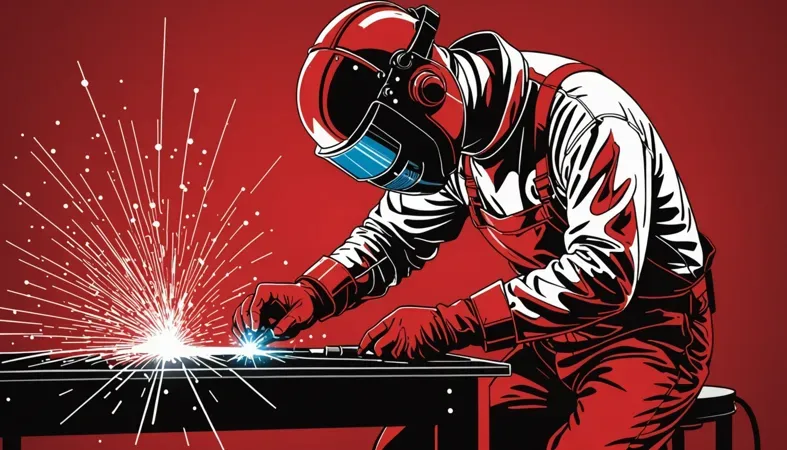
What Could Go Wrong: Common Issues
Let’s look at specific problems unique to GTAW welding.
-
Porosity in Welds
GTAW can suffer from porosity, which appears as tiny holes in the weld. Look for bubbly surfaces to identify it. To fix this, ensure clean metal and proper gas shielding.
-
Inadequate Fusion
In GTAW, inadequate fusion occurs when welds don’t bond well. Check for lack of penetration. I once made the mistake of using the wrong filler metal; be sure to match materials properly!
-
Inconsistent Heat Input
In GTAW, inconsistent heat can lead to weak welds. You’ll notice this if your bead is uneven. Use a stable current and move consistently along the joint.
-
Electrode Contamination
GTAW requires clean electrodes. Contamination appears as cracks or discoloration. Always clean the electrode before welding to prevent this.
-
Incorrect Gas Flow Rate
GTAW needs the correct gas flow. Too low causes weld porosity, while too high can blow away shielding gas. Check your flow rates, ideally around 15-20 liters/min (0.5-0.7 Cfm).
Aftercare, Inspection, and Advanced Tips for GTAW Welding
Here’s essential advice to keep your GTAW work in top shape.
Aftercare Tips
After finishing your welds, use a dedicated alkaline cleaner to remove impurities. Rinse with distilled water to prevent mineral deposits. Remember: improper cleanup can reduce joint strength and wear resistance by up to 15%!
Ensuring you have the right vision gear is vital for welding precision and safety, especially if you need to weld with prescription glasses.
Inspection
Inspect your weld bead pattern closely; any flattening or undercuts indicate travel speed issues. Use an ultrasonic thickness gauge to verify penetration depth, aiming for at least 1.5 mm (0.06 In). I once detected a potential flaw using the Fischer Isoscope to examine the surface for tips!
Expert Tips
If you’re experienced, fine-tune your GTAW technique by practicing with variable AC balance settings. Experiment with frequencies, targeting the 60 Hz range for smoother arcs. Also, use 1.6 mm (1/16 in) diameter tungsten electrodes; they provide superior arc stability at higher currents!
Applications Of GTAW Welding
People use GTAW welding for precision tasks and unique applications such as:
- Aerospace Components: It’s used for high-strength repairs and manufacturing lightweight parts. Its ability to create clean, precise welds makes it popular.
- Food Processing Equipment: GTAW welding is ideal for stainless steel tanks and pipes. Its excellent cleanliness ensures safety and compliance with health standards.
- Nuclear Power Plants: Applications include critical pipeline systems. The process provides strong, defect-free welds, which are crucial for safety.
- Automotive Race Cars: It’s used for welding aluminum frames. High-quality welds can withstand extreme conditions, enhancing performance.
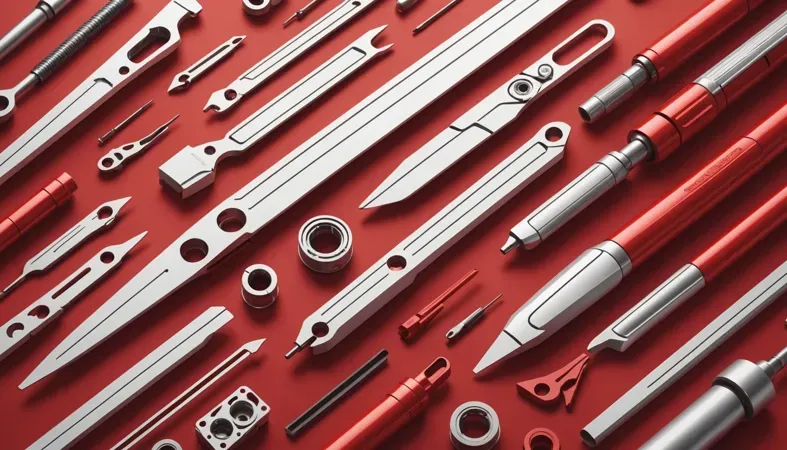
Alternatives for Achieving Results Similar to GTAW Welding
Looking for other ways to achieve similar results? Consider MIG welding, which uses a continuously fed wire for faster welding speeds. Products like the Lincoln Electric MIG Welder are ideal for quick jobs.
Submerged Arc Welding (SAW) is another option. It’s excellent for heavy materials, offering deep penetration in thick metals. Each method has its strengths, so choose based on your specific needs and the materials you’re working with.
Frequently Asked Questions (FAQs)
Now let us look at some common questions I typically get asked about GTAW welding.
Is GTAW the Same As TIG Welding?
Yes, GTAW is the same as TIG welding. GTAW stands for Gas Tungsten Arc Welding, and it uses a non-consumable tungsten electrode to generate the weld. This process provides superior control for thin materials, making it ideal for precision tasks. Understanding the intricacies of welding sheet metal can further enhance your proficiency in using TIG for detailed work.
What is the Difference Between GTAW and SMAW?
The main difference between GTAW and SMAW lies in the electrodes used. GTAW utilizes a non-consumable tungsten electrode, while SMAW, or Shielded Metal Arc Welding, uses a consumable electrode. SMAW is generally less expensive, using equipment costs that can be 25% lower than GTAW.
What Type Of Industries Require Gtaw-quality Pipe Welds?
Industries like aerospace, automotive, and food processing often require GTAW-quality pipe welds. These sectors demand high welding standards, especially in critical applications where safety and reliability are paramount. For example, aerospace quality welds have a rigorous visual and testing standard.
What Type Of Welding Power Supply is Required for GTAW?
A constant current (CC) power supply is required for GTAW welding. This ensures a stable arc and allows for better control. Typically, this power supply ranges from 10 to 300 amps for most applications, which provides flexibility depending on the material thickness.
What Are the Advantages Of GTAW Welding?
The advantages of GTAW welding include high-quality welds and versatility across various materials, including stainless steel and aluminum. It also produces minimal spatter, reducing cleanup time, which can be important in a production environment. Selecting the correct gauge of wire for your particular welder is crucial for achieving optimal results and understanding your project’s specific requirements will guide you in choosing what size wire for a welder.
What Does GTAW Mean in Welding?
GTAW means Gas Tungsten Arc Welding in welding terminology. It’s usually preferred for its ability to create clean, precise welds across a variety of metals, making it an excellent choice for critical fabrications and detailed work.
Conclusion
We covered what GTAW welding is, how it works, types of GTAW welding, steps involved, factors that affect it, common issues, aftercare and inspection, applications, and alternatives. Each section shed light on the process and areas related to GTAW. We also touched on its importance in industries requiring high-quality welds.
In summary, what is GTAW welding? It’s a precise method using a non-consumable tungsten electrode and inert gas for shielding. This technique is vital in industries needing high standards, offering qualities like minimal spatter and high control in weld placement.
For further insights and information, visit What is Welding to explore more about welding techniques and their applications.
References
- American Welding Society. (2020). AWS Welding Handbook: Welding Science and Technology (Vol. 1). Miami, FL: American Welding Society.
- American Welding Society. (2021). AWS SENSE: Guidelines for Entry-Level Welders. Miami, FL: AWS.
Joe Carter is a retired welding professional with over 40 years of hands-on experience in the industry, spanning ship repair, structural welding, and even underwater projects. Joe is a master of MIG, TIG, and Stick welding. Passionate about mentoring the next generation of welders, Joe now shares his decades of expertise and practical insights to help others build rewarding careers in welding.
American Welding Society, Gas Tungsten Arc Welding, GTAW Welding, Industrial Welding, MIG Welding, Welding, Welding Applications, Welding Standards, Welding Techniques, Welding Types


